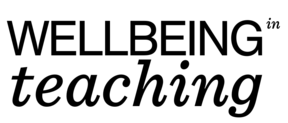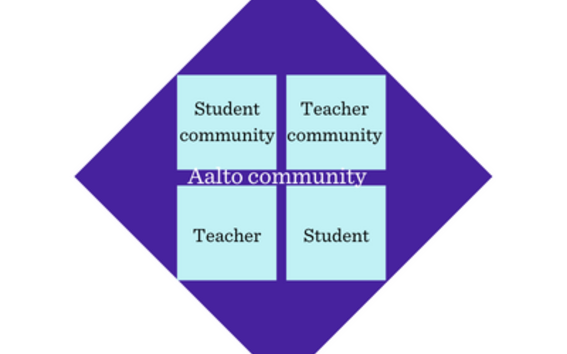Wellbeing in Teaching: Holistic wellbeing in studies and work

Study wellbeing and wellbeing at work are subjective experiences of an individual. They are manifested, for example, as feelings of coping and through the effort given
Wellbeing at work is built on the content of work, the social and physical working environment, and management. The term study wellbeing refers to the wellbeing experienced by a student in their own institution and the connections associated with it.
Instead of focusing solely on improving the wellbeing of individuals, we as a community must aim for holistic wellbeing. That is a multidimensional concept of wellbeing.
Holistic wellbeing enables different kinds of lifestyles and feelings of empowerment. It also encourages participation in the community. When social and structural challenges are addressed in the community, they do not become individual challenges.
The key factors for pedagogical wellbeing are inclusion, belonging and the opportunity to develop and receive support.

Pedagogical well-being has two levels - the level of the individual and the level of the community, which are combined at the level of the university community.
- What would improve your wellbeing?
- How could you support the wellbeing of others?
- How could the wellbeing of your immediate community improve?
- What could the Aalto community do to improve wellbeing?
Cornerstones of pedagogical wellbeing
Learning takes place also outside the classroom
Where did we learn before we had classrooms? Is the teacher responcible for everything and everyone? Learning happens everywhere, and a teacher cannot take care of everything. The teacher can think about the goals, methods, evaluation and measurement of the course and collects feedback on the success. An increasingly complex world and a diverse group of students raises the question: What kind of ways or methods best support learning?
A teacher who allows a student to experiment, fail and develop, supports a safer learning environment and better study wellbeing. Note: also the teacher has the right to experiment and learn. This alignment, again, also supports the wellbeing of students.
Some students need more support for their studies. Get to know the guidance and support services at Aalto.
Teaching is not only teacher-led events
Experiencing independence, belonging and feelings of success support teachers wellbeing. This will act as a positive and activating emotion that supports enthusiasm. Competence in teaching can be divided into pedagogical and content knowledge. In addition, teaching methods are closely linked to technological knowledge. If one of these three changes, it is worth keeping an eye on the others, as well.
The term competence development refers to the fact that the teacher has a feeling that they are in control of their own subject matter and methods. This, however, doesn't necessarily mean that teaching is solely teacher-led. Also the students bring their own knowledge and experiences to teaching situations. Collaborative methods supports wellbeing for all.
Even if the opportunity to experience independence, inclusion and success is reduced, the meaning and purpose of the work can still be experienced and supported. Encouraging leadership, a favorable atmosphere and social belonging can support the experience of meaningful work.
A favorable atmosphere can at best be a situation where the motivation and commitment of one teacher increases the enthusiasm of other teachers.
Sources
Myllykoski-Laine, S., Postareff, L., Murtonen, M., Vilppu, H. 2022. Building a framework of a supportive pedagogical culture for teaching and pedagogical development in higher education. Saatavilla: https://link.springer.com/article/10.1007/s10734-022-00873-1
Yrttiaho, R., Posio, S. 2021. Opettajan hyvinvointikirja. PS-kustannus
Mäki, K., Vanhanen-Nuutinen, L., Nieminen, V-S., Mielityinen, S. & Ilves, V. 2021. Digiä ja keitaita - korkeakouluopettajat pandemian paineessa. Saatavilla: https://julkaisut.haaga-helia.fi/digia-ja-keitaita-korkeakouluopettajat-pandemian-paineessa/
Learning Services
- Published:
- Updated:
